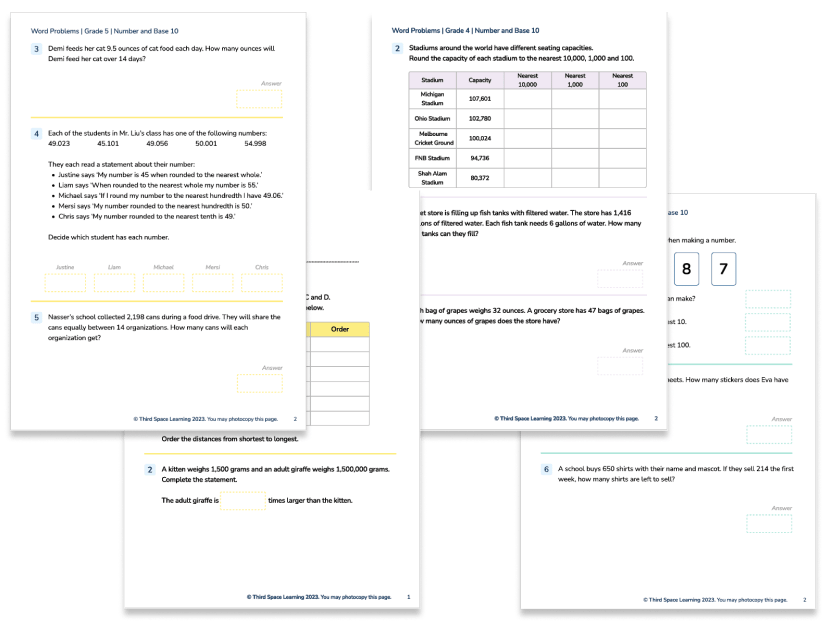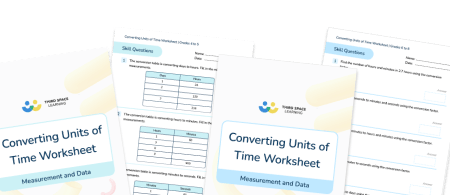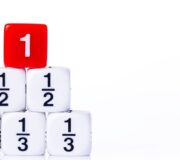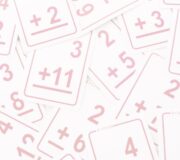Time Word Problems For Grades 3-5 With Tips On Supporting Students’ Progress
Time word problems are an important element of teaching children how to tell the time. Children are introduced to the concept of time in 1st grade. At this early stage, they learn the basics of analog time; reading to the hour and half-hour on digital and analog clocks and learning how to draw hands on the clocks to show these times. As they move through elementary school, students progress to being able to compare the duration of events. By the time children reach upper elementary, they should be confident in reading the time on analog and digital clocks and solving problems involving converting between units of time and determining elapsed time.
When students are first introduced to time and time word problems, it is important for them to have physical clocks, to hold and manipulate the hands. Pictures on worksheets are helpful, but physical clocks enable them to work out what is happening with the hands and to solve word problems involving addition word problems and subtraction word problems.
Time word problems are important for helping children to understand how time is used in the real world, so we have put together a collection of time word problems, which can be used with students from grades 3-5.
Converting Units Of Time Worksheet
Free Converting Units Of Time worksheets for 5th to 8th Grade. Each worksheet contains 10 skills based practice questions and 5 applied questions.
Download Free Now!Time word problems in school
Schools following Common Core
Time in 3rd grade
In third grade, students are telling time to the nearest minute and can measure time intervals in minutes. They are also solving word problems involving addition and subtraction of time intervals in minutes, and representing these problems on a number line. Students know the number of seconds in a minute, days in a month and year and compare durations of events.
Time in 4th grade
By fourth grade, students should be confident telling the time in analog to the nearest minute, using analog and digital clocks. They also need to be able to solve problems involving converting from hours to minutes; minutes to seconds; years to months and weeks to days.
Time in 5th grade
By fifth grade, there is only limited mention of time in the curriculum. Students continue to build on the knowledge they have learned so far and should be confident telling the time and solving a range of problems, including: converting units of time; elapsed time word problems, working with timetables and tackling multi-step word problems.
Third Space Learning’s one-on-one AI math tutoring programs incorporate a wide range of word problems to develop students’ problem-solving skills. Available for 3rd, 4th and 5th graders, our online tuition programs delivered by Skye, the AI math tutor, are personalized to suit the needs of each individual student, fill learning gaps and build confidence in math.
Schools not following Common Core
Other schools not following Common Core teach the same concepts as shown above, although some individual standards and concepts may vary slightly. Some concepts may be covered in different grade levels, depending on the standards your school district has adopted.
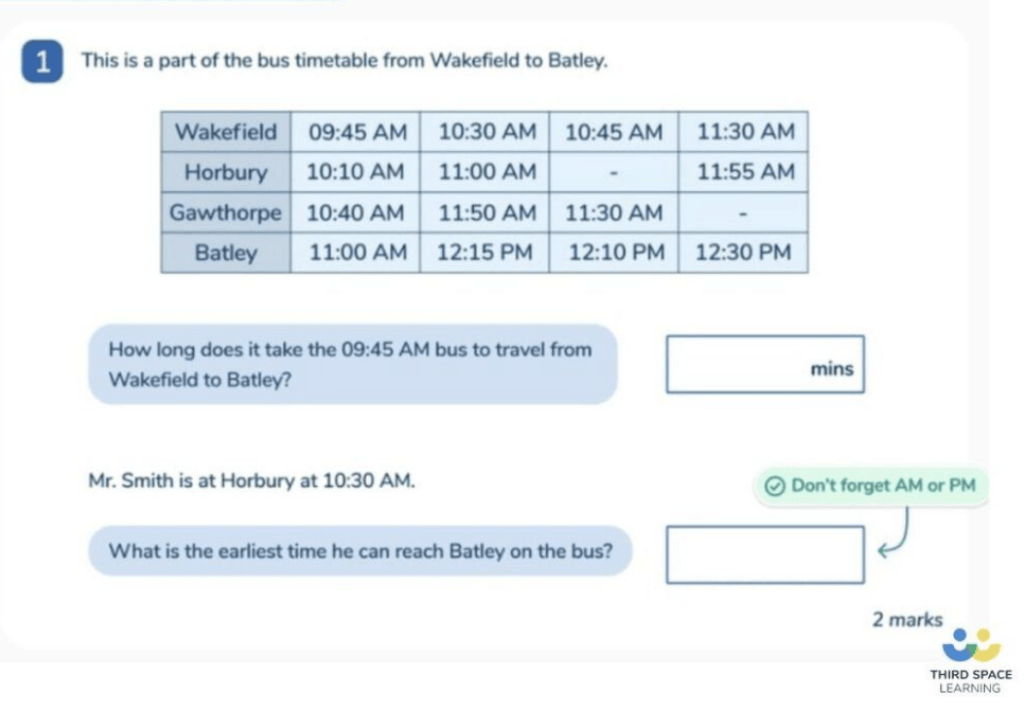
Why are word problems important for children’s understanding of time
Word problems are important for helping children develop their understanding of time and the different ways time is used on an everyday basis. Confidence in telling the time and solving a range of time problems is a key life skill. Time word problems provide children with the opportunity to build on the skills they have picked up and apply them to real-world situations.
How to teach time word problem-solving in elementary school
It’s important children learn the skills needed to solve word problems. Key things they need to remember are: to make sure they read the question carefully; to think whether they have fully understood what is being asked and then identify what they will need to do to solve the problem and whether there are any concrete resources or pictorial representations which will help them.
Here is an example:
Adam drives to New York. He starts his drive at 3:15 pm. He stops for a break of 15 minutes at 4:50 and arrives in New York at 6:15 pm.
How long did Adam spend driving?
How to solve:
What do you already know?
- We know that he starts his drive at 3:15 pm and stops for a break at 4:50 pm. We can calculate how long the first part of his journey was, by counting on from 3:15 to 4:50.
- He had a break at 4:50 pm for 15 minutes, so we won’t include that in our driving time.
- He then must have started driving again at 5:05 pm, before arriving at 6:15 pm. We can use this information to work out the length of the second part of his journey.
- We can then add the 2 journey times together, to calculate the total amount of time spent driving.
How can this be represented visually?
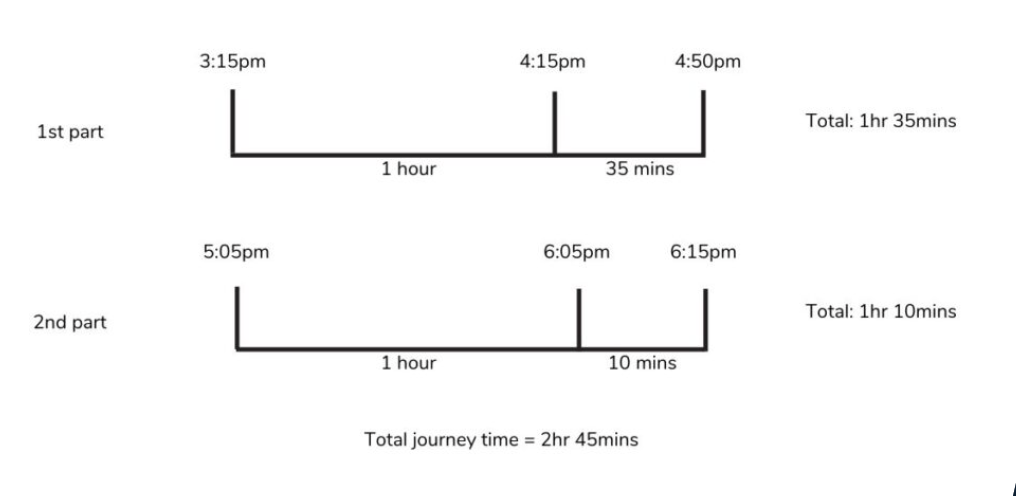
- We can use a number line to calculate the length of time each journey takes.
- If we start by adding on an hour, we can then calculate how many more minutes for each section of the journey.
- Once we have calculated the journey time for each part of the journey, we can add these together to calculate the total journey time.

Meet Skye, the voice-based AI tutor making math success possible for every student.
Built by teachers and math experts, Skye uses the same pedagogy, curriculum and lesson structure as our traditional tutoring.
But, with more flexibility and a low cost, schools can scale online math tutoring to support every student who needs it.
Find out moreTime word problems for 3rd grade
When solving time 3rd grade word problems, students need to be confident telling time on analog and digital clocks. They also begin solving word problems involving addition and subtraction of time intervals in minutes and representing these problems on a number line
Question 1
If there are 60 seconds in 1 minute. How many seconds are there in 8 minutes?
Answer: 480 seconds
60 x 8 = 480 seconds (calculate 6 x 8, then multiply by 10)
Question 2
Mason played on his VR from 3:35 to 5:25.
How long did he play on his VR?
Answer: 1 hour and 50 minutes.
Count on from 3:35 (using a number line if needed)
Question 3
Jamie started his homework at 3:45 pm. He finished 43 minutes later.
What time did Jamie finish?
Answer: 4:28 p.m.
Count on 43 minutes from 3:45 (use a number line, if needed) = 4:28.
Question 4
Chloe and Freya went to the movies. The movie started at 2:05 pm and lasted for 1 hour and 43 minutes.
What time did the movie end?
Answer: 3:48 pm
Count on one hour from 2:05 pm to 3:05 pm, then add another 43 minutes – 3:48 pm
Question 5
A family is driving on their vacation.
They drive for 2 hours and 28 minutes, stop for 28 minutes and then drive a further 1 hour and 52 minutes.
If they left at 8:30 am, what time did they arrive?
Answer: 1:18 pm
2 hours and 28 minutes from 8:30 am = 10:58 am
10:58 am with a 28-minute break = 11:26 am
1 hour 52-minute drive from 11:26 am = 1:18 pm
READ MORE: Math Problems For 3rd Graders
Time word problems for 4th grade
With 4th grade word problems, students should be confident telling the time in analog and digital and solving a wider range of time problems including: converting units of time; interpreting and answering questions on timetables and elapsed time.
Question 1
The sun set at 7:31 p.m. and rose again at 6:28 a.m.
How many hours passed between the sun setting and rising again?
Answer: 10 hours and 57 minutes
Count on from 7:31 to 5:31 (10 hours)
Then count on from 5:31 to 6:28 (57 minutes)
Question 2
A play started at 2:45 and finished at 4:58.
How long was the play?
Answer: 2 hours and 13 minutes
Count on 2 hours from 2:45 to 4:45, then add another 13 minutes to get to 4:58.
Question 3
How many seconds are there in 23 minutes?
Answer: 1380 seconds
Students should use the strategy of their choice to multiply: 60 x 23 = 1,380.
Question 4
Max ran a race in 2 minutes 13 seconds, Oscar ran it in 125 seconds.
What was the difference in time between Max and Oscar?
Answer: Oscar was 8 seconds faster.
Max – 2 minutes 13 seconds, Oscar – 2 minutes 5 seconds (difference of 8 seconds)
Question 5
5 children took part in a sponsored swim. The children swam for the following lengths of time:
Sam: 27 minutes 37 seconds
Jemma: 33 minutes 29 seconds.
Ben: 23 minutes 18 seconds
Lucy: 41 minutes 57 seconds
Oliver: 39 minutes 21 seconds
Answer: 18 minutes 30 seconds
Longest: Lucy: 41 minutes 57 seconds
Shortest: Ben: 23 minutes 18 seconds.
Difference – count up from 23 minutes 18 seconds to 41 minutes 57 seconds = 18 minutes 39 seconds
Time word problems for 5th grade
No new time concepts are taught to students in 5th grade word problems. By this stage, they are continuing to build confidence and develop skills within the concepts already taught.
Question 1
Chess: 25 minutes
Basketball: 40 minutes.
Trampolining: 30 minutes
Gymnastics: 50 minutes
Tennis: 40 minutes
Golf: 45 minutes
Ruby is choosing activities to take part in at her holiday club.
The activities can’t add up to more than 2 hours.
Which 3 activities could she do, which add up to exactly 2 hours?
Answer: Trampolining, gymnastics, and tennis: Trampolining: 30 minutes, gymnastics: 50 minutes, tennis: 40 minutes.
Question 2
4 children take part in a freestyle swimming relay.
Their times were:
Maisie: 42.8 seconds
Amber: 36.3 seconds
Megan: 48.7 seconds
Zymal: 45.6 seconds
What was the final time for the relay in minutes and seconds?
Answer: 2:53.4
(Show as column method) 42.8 + 36.3 + 48.7 + 45.6 = 173.4 seconds
173.4 seconds = 2:53.4
Question 3
What is 6 minutes 47 seconds in seconds?
Answer: 407 minutes
60 x 6 = 360
360 + 47 = 407 minutes
Question 4
Bethany’s goal is to run around her school running track in under 8 minutes.
She runs it in 440 seconds. Does she achieve her goal? How far above or below the target is she?
Answer: Bethany beats her target by 40 seconds
8 minutes = 8 x 60 = 480 minutes
Question 5
Lucy’s favorite program is on TV twice a week for 35 minutes.
In 6 weeks, how many hours does Lucy spend watching her favorite program?
Answer: 7 hours
420 minutes = 7 hours
(Student uses strategy of choice) 35 x 12 = 420 minutes
420 ÷ 60 = 7
More time and word problem resources
For more time resources, take a look at our collection of printable time worksheets. Third Space Learning also offers a wide collection of word problems covering a range of topics such as place value, decimals and word problems with fractions, percentage word problems, division word problems, ratio word problems, addition and subtraction word problems, multiplication word problems, money word problems.
Do you have students who need extra support in math?
Skye—our AI math tutor built by experienced teachers—provides students with personalized one-on-one, spoken instruction that helps them master concepts, close skill gaps, and gain confidence.
Since 2013, we’ve delivered over 2 million hours of math lessons to more than 170,000 students, guiding them toward higher math achievement.
Discover how our AI math tutoring can boost student success, or see how our math programs can support your school’s goals:
– 3rd grade tutoring
– 4th grade tutoring
– 5th grade tutoring
– 6th grade tutoring
– 7th grade tutoring
– 8th grade tutoring
The content in this article was originally written by former Deputy Head Emma Johnson and has since been revised and adapted for US schools by math curriculum specialist and former elementary math teacher Christi Kulesza.
